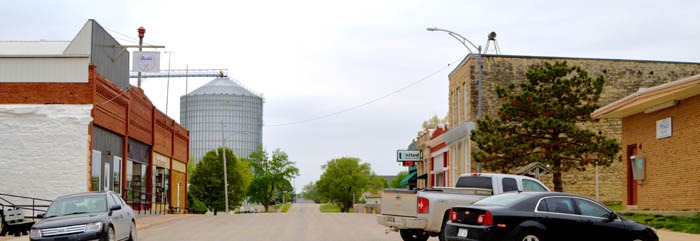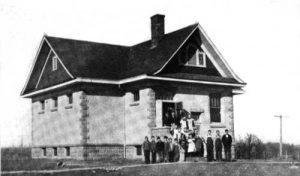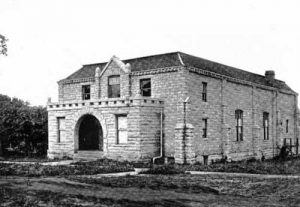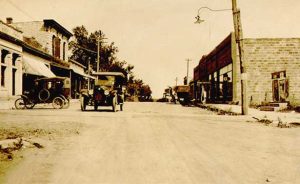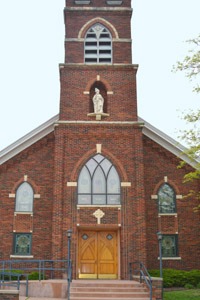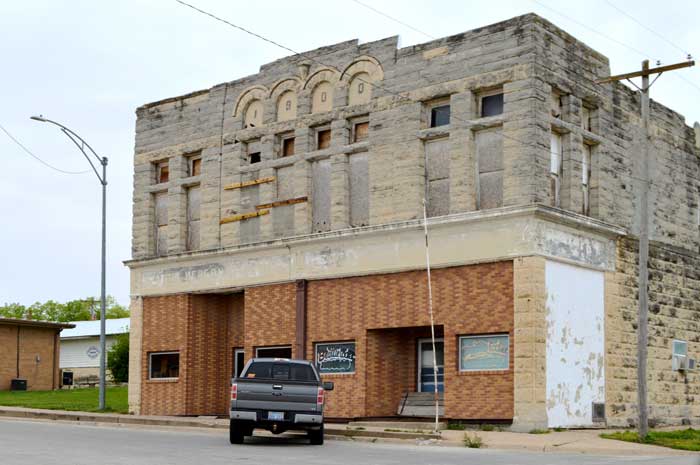
Beattie, Kansas Depot.
Beattie, Kansas, located on the west branch of the Vermillion River in Marshall County, 100 miles west of the Missouri River, was settled before 1865 by Hugh Hamilton, H. C. Smith, Eli Goldsberry, E. Cain, J. Totten, G. Thorne, James Fitzgerald, P. Jones, and others.
The town was laid out in June 1870, by the Northern Kansas Land and Town Company of St. Joseph, Missouri, on 160 acres owned by James Fitzgerald and John T. Watkins. Another reason for locating the town was the stone quarries, the stones of which were known for many years as the finest in Kansas or Nebraska for building purposes.
John Watkins erected the first building in Beattie. One of the first buildings in the new town was moved from Elmwood in Doniphan County in the spring of 1871 to be used as a depot for the St. Joseph and Western Railway. A post office was established in July 1871, and the town was named for A. Beattie, then-Mayor of St. Joseph, Missouri.
J. J. Sheldon, about the same time, moved a building on the townsite and used it as a dwelling. John Watkins. A. J. built the next building, and L. Brunswig opened the first store, in the spring of 1872. The first hotel was built by Mr. Putcamp in 1873 and was called the Sherman House.
The same year, Brunswig & Baer built a steam elevator measuring 24x60x30 feet for $2000. In 1880-81 the elevator was remodeled at the expense of $4000 to give a capacity of 15,000 bushels. This elevator had a corn-sheller attachment with a capacity of 5000 bushels daily. The Farmers Co-operative Association also owned an elevator in Beattie.
By 1890, Beattie reached its peak population of 648 people. Though surrounded by fertile ground and a thick layer of limestone that led to several quarries, young Beattie would grow no more. In 1910, the town boasted banking facilities, a newspaper, telegraph and express offices, churches, schools, and a money order post office with two rural mail routes. The population in 1910 was 500.
In 1917, the Beattie Electric Light Company furnished Beattie and Home City with light and power, and the Farmers Mutual Telephone Company operated 105 telephones in Beattie with 14 country lines. Unfortunately, by this time, the stone quarries were partially abandoned. Other businesses in town included a drug store, two banks, a hardware store, two implement providers, to general merchandise store, a lumberyard, a grocery store, a restaurant, two bakeries, a hotel, a shoe repair shop, a produce market, a furniture store, a garage, and a newspaper called the Beattie Eagle. Professionals providing service included a dentist, three physicians, a photographer, and three blacksmiths.
Over the years, Beattie’s population gradually fell, and today is home to about 195 people. It still retains a post office. The city has been called “The Milo Capital of the World” and hosts the annual “Beattie Milo Festival.”
Beattie is located about 15 miles east of Marysville.
By Kathy Alexander/Legends of Kansas, updated February 2023.
Also See:
Sources:
Blackmar, Frank W.; Kansas: A Cyclopedia of State History, Vol I; Standard Publishing Company, Chicago, IL 1912.
Cutler, William G; History of Kansas; A. T. Andreas, Chicago, IL, 1883.
Forter, Emma Elizabeth Calderhead; History of Marshall County, Kansas: Its People, Industries, and Institutions; B.F. Bowen, 1917.

